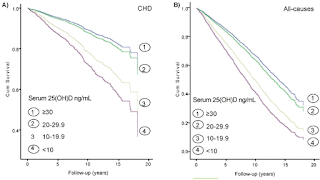Article Information
Article Type:
Research
Citation: Longjian Liu (2015) Joint Effects of Serum 25(OH) D and C-Reactive Protein Concentration on Coronary Heart Disease and All-cause Mortality in Patients with Diabetes Mellitus. J Heart Health 1 (1): http://dx.doi.org/10.16966/jhh.105
Copyright:© 2015 Longjian Liu. This is an open-access article distributed under the terms of the Creative Commons Attribution License, which permits unrestricted use, distribution, and reproduction in any medium, provided the original author and source are credited.
Publication history:
Authors :
Longjian Liu : Department of Epidemiology and Biostatistics, and Department of Environmental and Occupational Health, Drexel University School of Public Health, Philadelphia, PA, 19104, USACorresponding author: Longjian Liu, MD, PhD, MSc (LSHTM), FAHA, Interim Chair of the Department of Environmental & Occupational Health, Associate Professor, Department of Epidemiology & Biostatistics, Drexel University School of Public Health, RM 515, Nesbitt Hall, 3215 Market ST, Philadelphia, PA 19104, USA, Tel: 267-359-6049, 267-886-5138; E-mail: Longjian.Liu@Drexel.edu
Abstract
The study aimed to examine the joint predicting effect of serum 25(OH) D (a biomarker of vitamin D level in blood) and C-reactive Protein (CRP) concentration on the risk of mortality from Coronary Heart Disease (CHD) and all-causes in patients with type 2 Diabetes Mellitus (T2DM) using data from the third National Health and Nutrition Examination Survey (NHANES III). Of 14965 subjects aged ≥ 30 years who participated in the NHANESIII, 2146 patients with T2DM at baseline (1988-1994) were followed up through December 31 of 2006. The associations of baseline serum 25(OH) D and CRP with outcomes were examined prospectively using Cox’s hazard proportional regression models. The results show that during a median follow-up of 12.3 years, 1257 (58.6%) of the patients with T2DM died, and 370 deaths were from CHD. Multivariate adjusted Cox’s models indicate that decreased 25(OH) D level significantly predicted risk of death. The corresponding hazard ratios for the risk of CHD mortality among those with serum 25(OH) D levels 20-29.9, 10-19.9, and <10 ng/mL were 1.35, 1.38 and 2.19, as compared to those with 25(OH) D ≥ 30 ng/mL, respectively. Similar associations between decreased 25(OH) D and risk of all-cause mortality were observed. Furthermore, a joint effect of decreased 25(OH) D and increased CRP significantly predicted an increased risk of CHD and all-cause mortality. In conclusion, using data from a nationally representative and longitudinal survey, findings from the study suggest that decreased serum vitamin D and increased CRP concentrations significantly predicted the risk of CHD and all-cause mortality in patients with T2DM.
Keywords
Prospective Study; Vitamin D; Inflammation; Mortality
Figure 2: Joint effects of serum 25(OH) Dand CRP concentrations on CHD (Figure A) and all-cause (Figure B) mortality
Figure 1:Survival function of patients with T2DM died from CHD (Figure A) and all-causes (Figure B)
Read Full Article : Here
Read Full Article : Here







